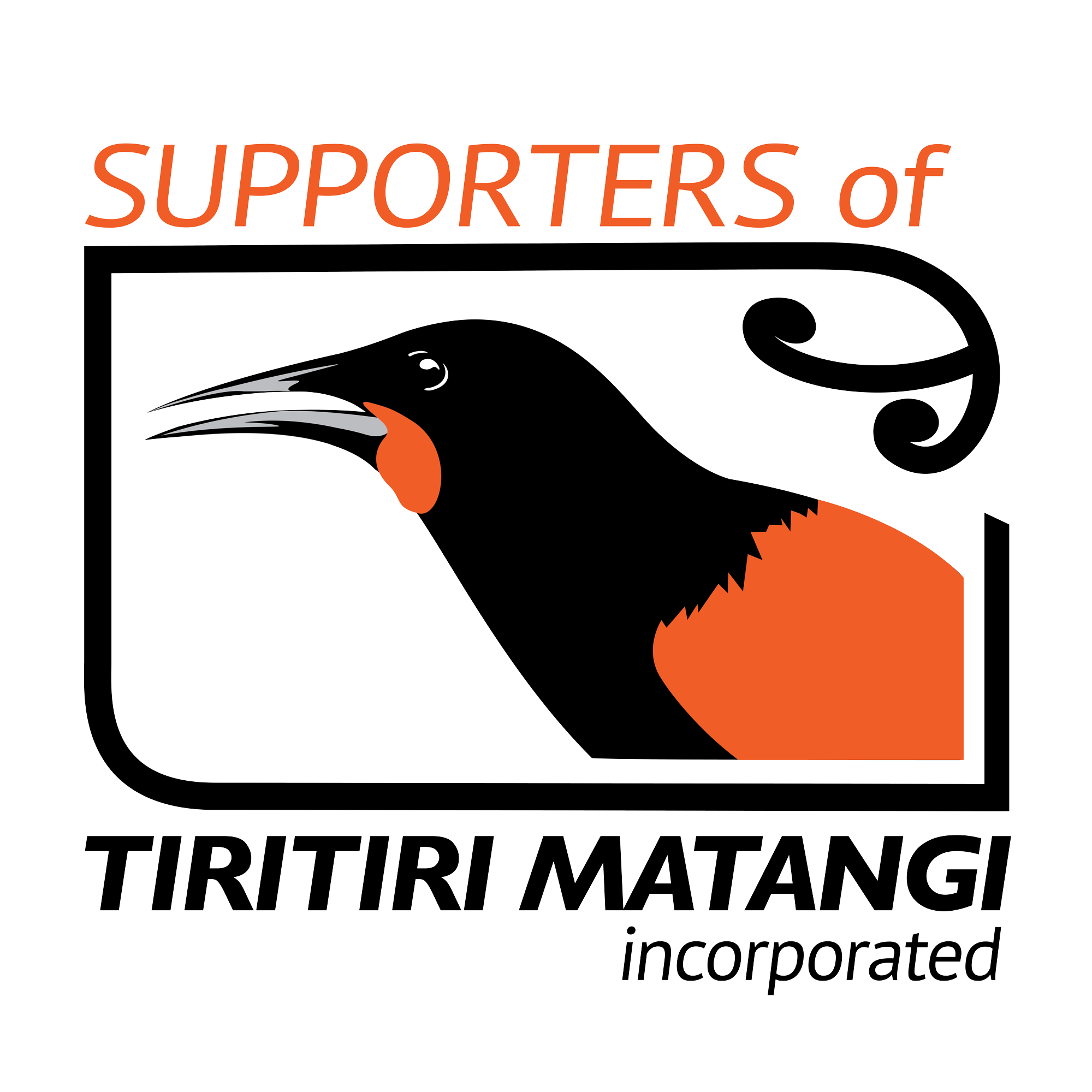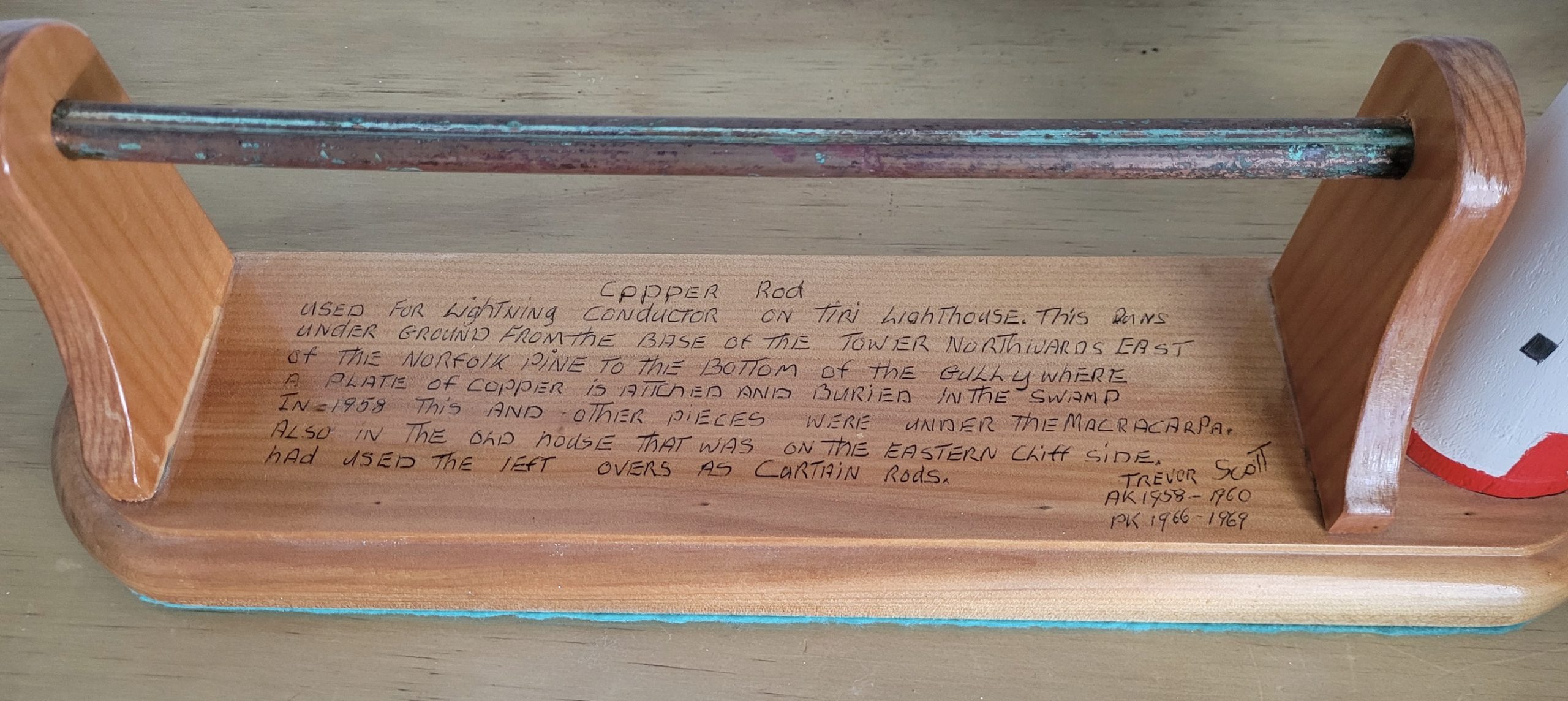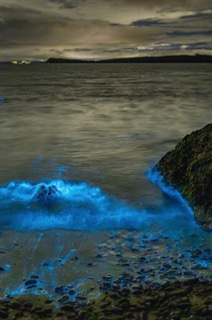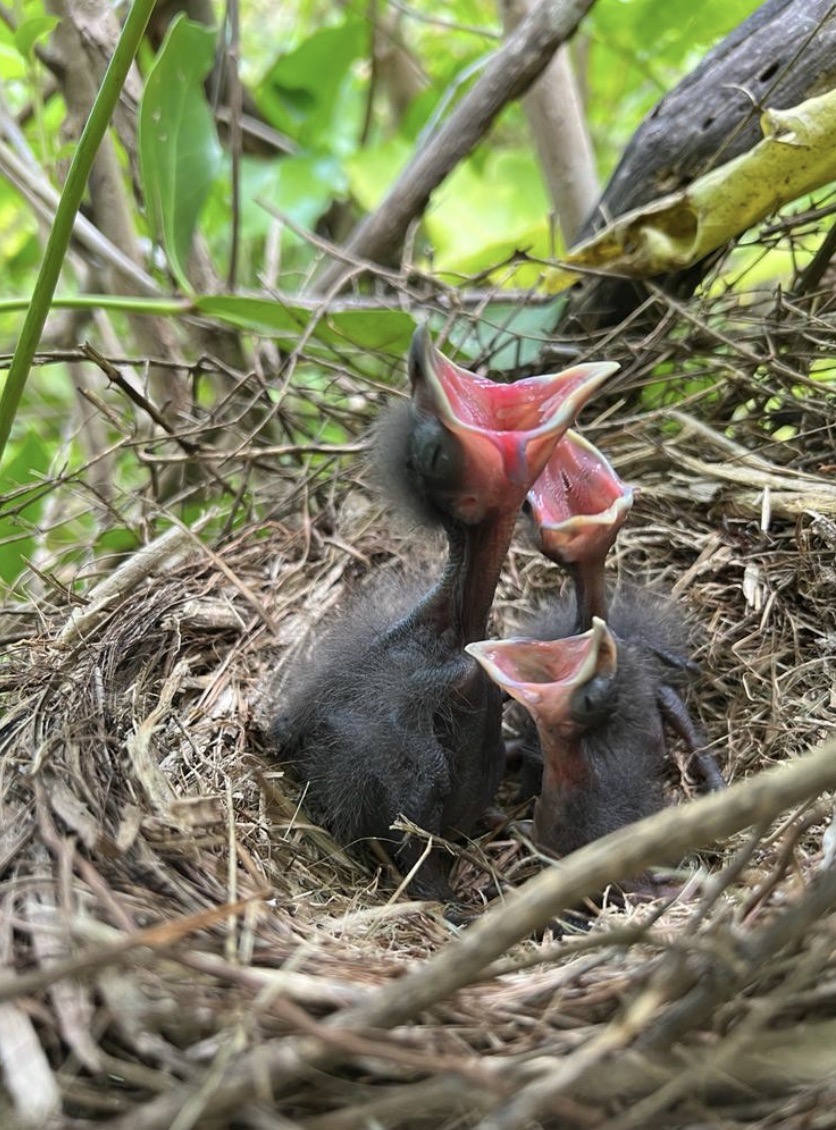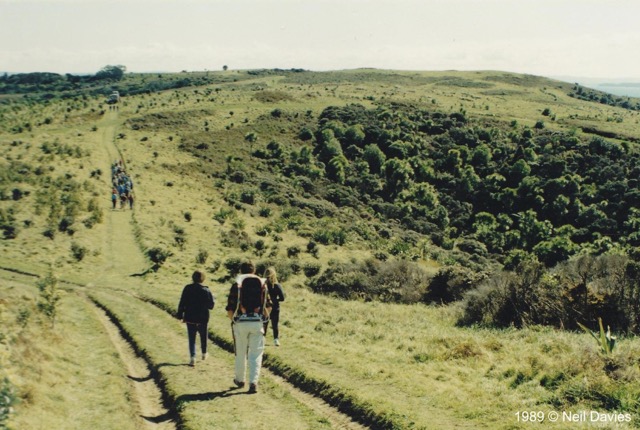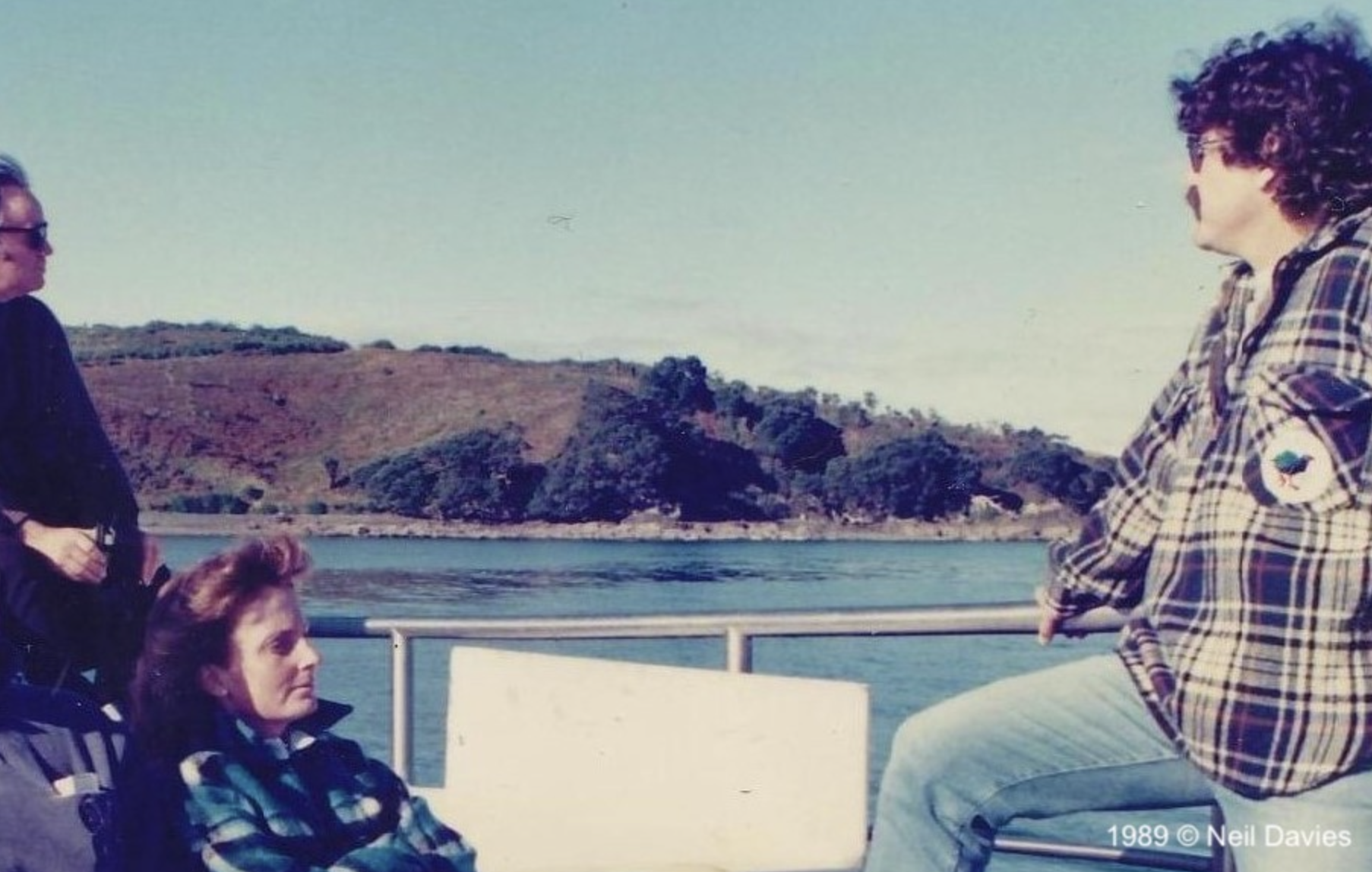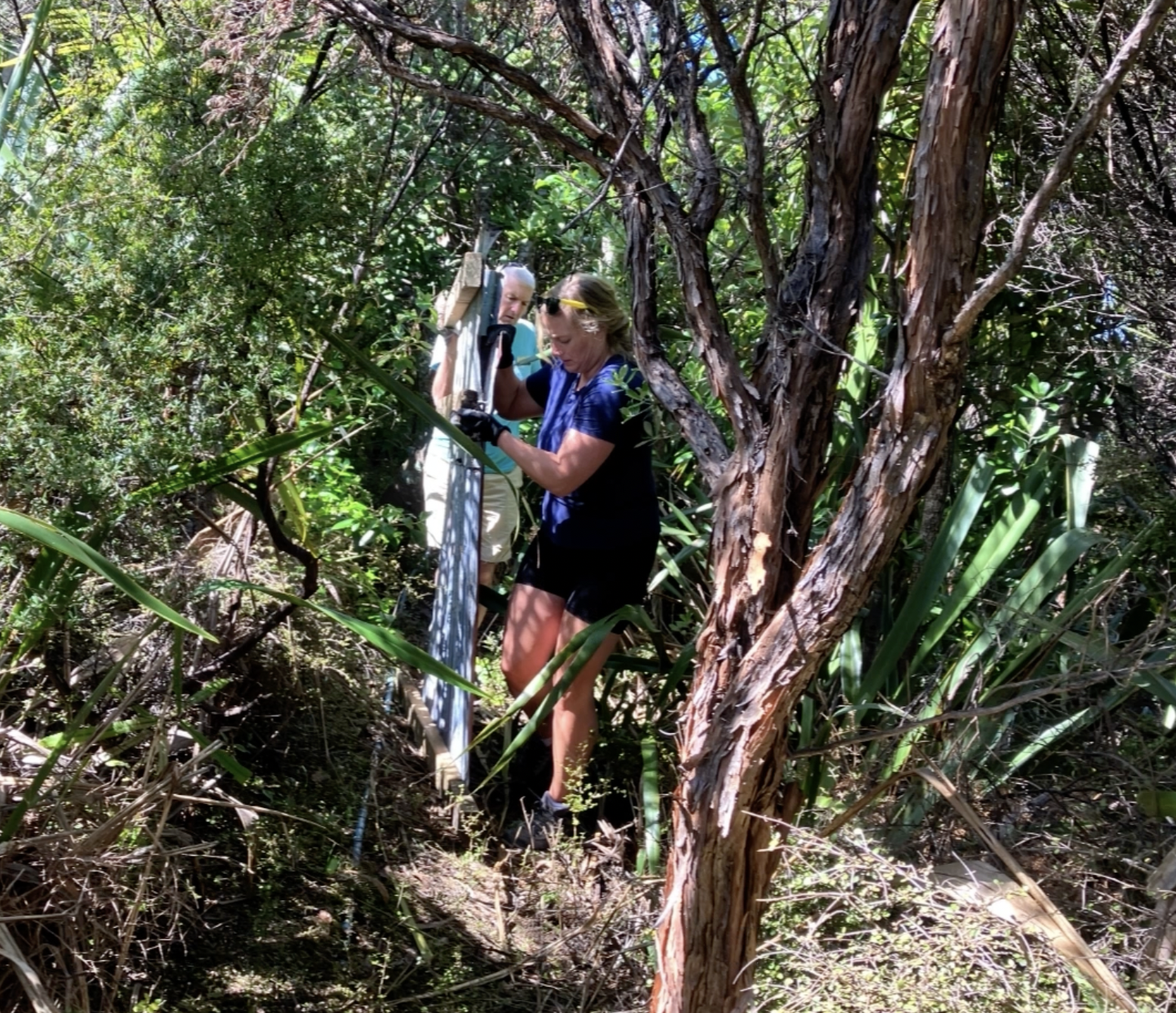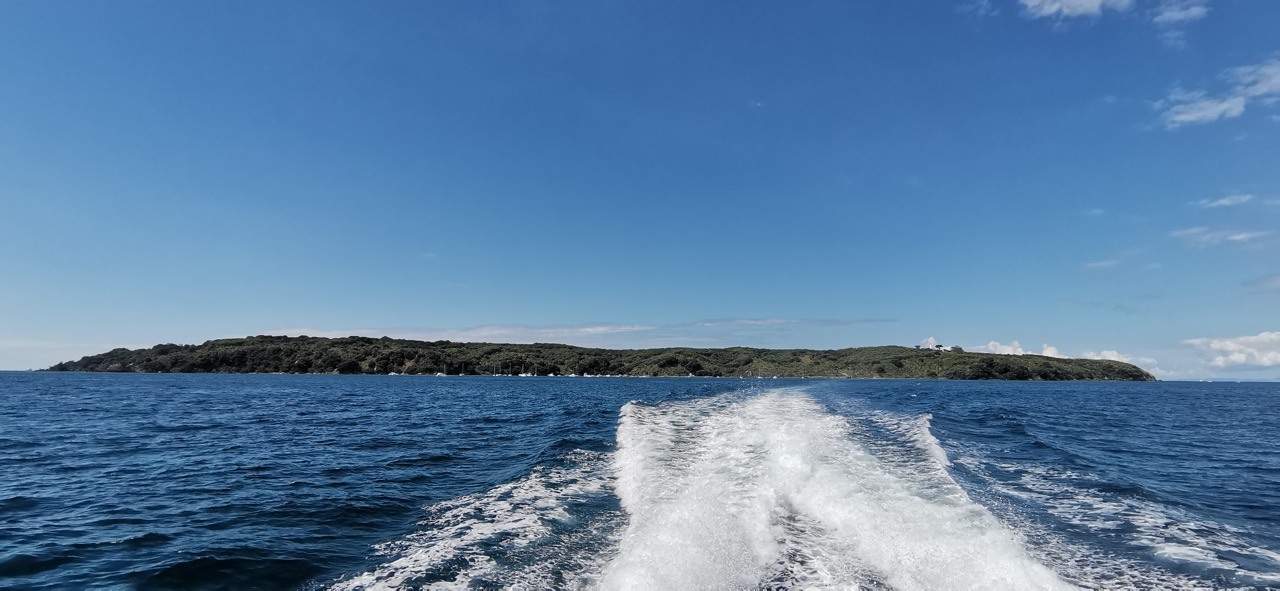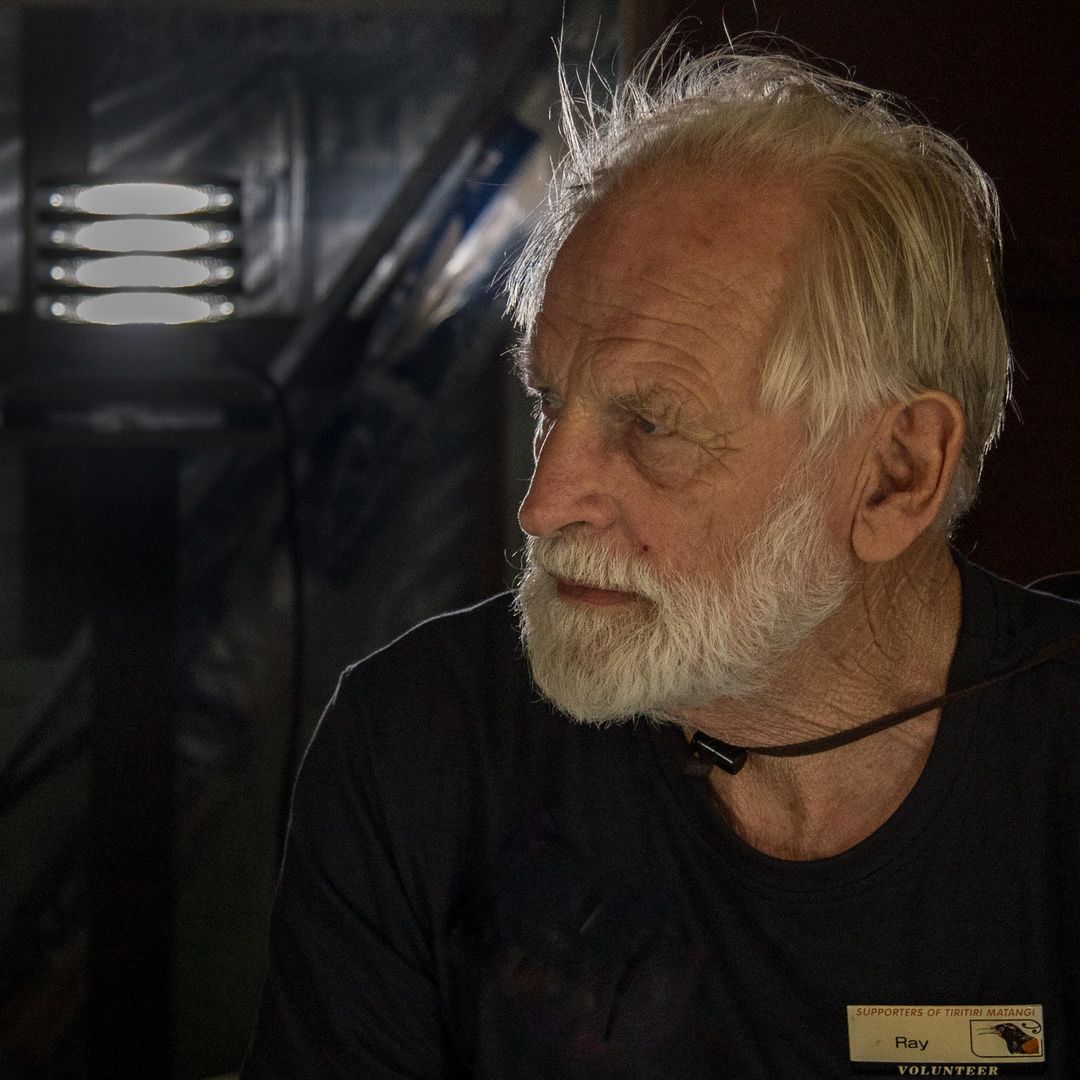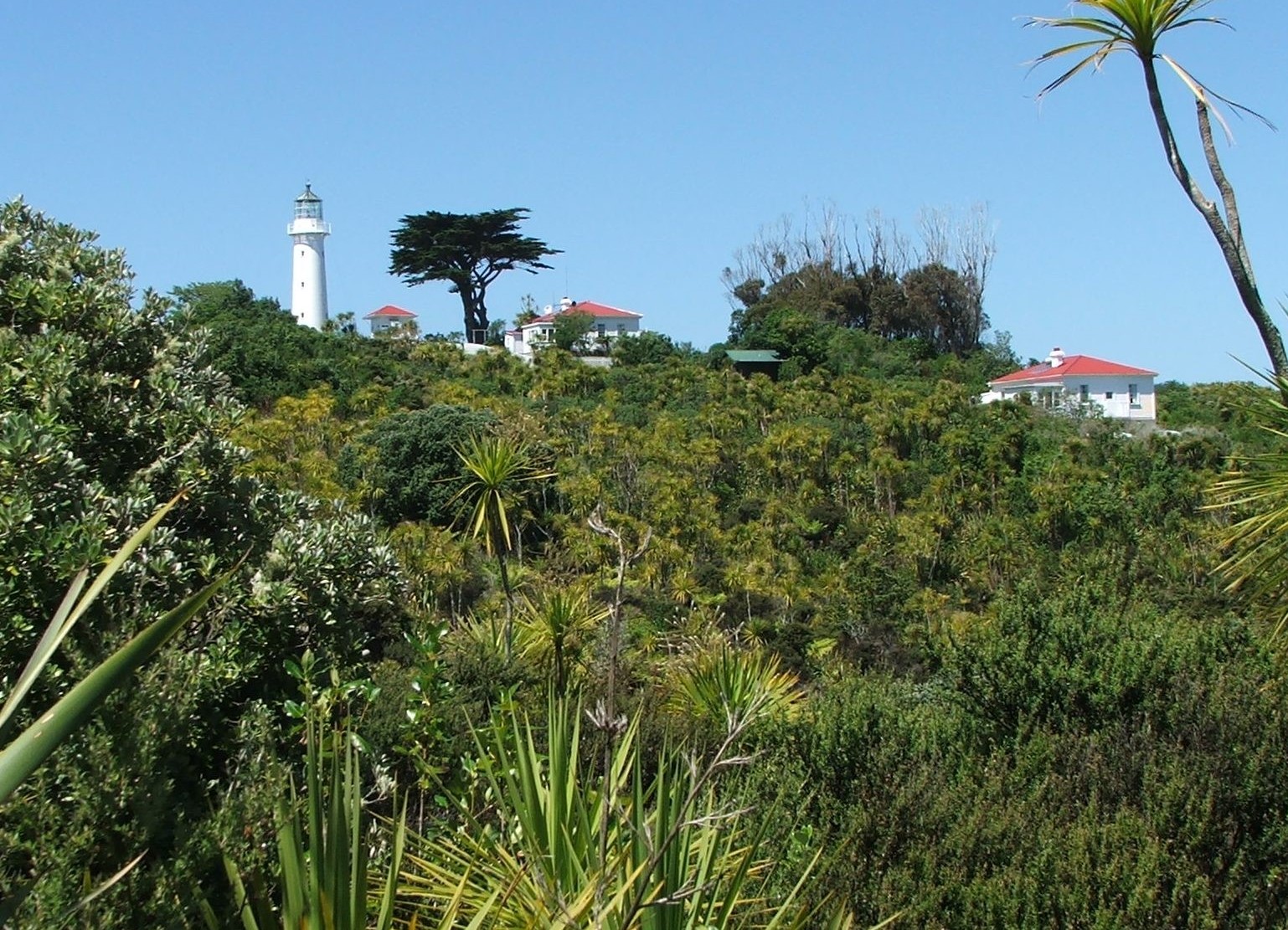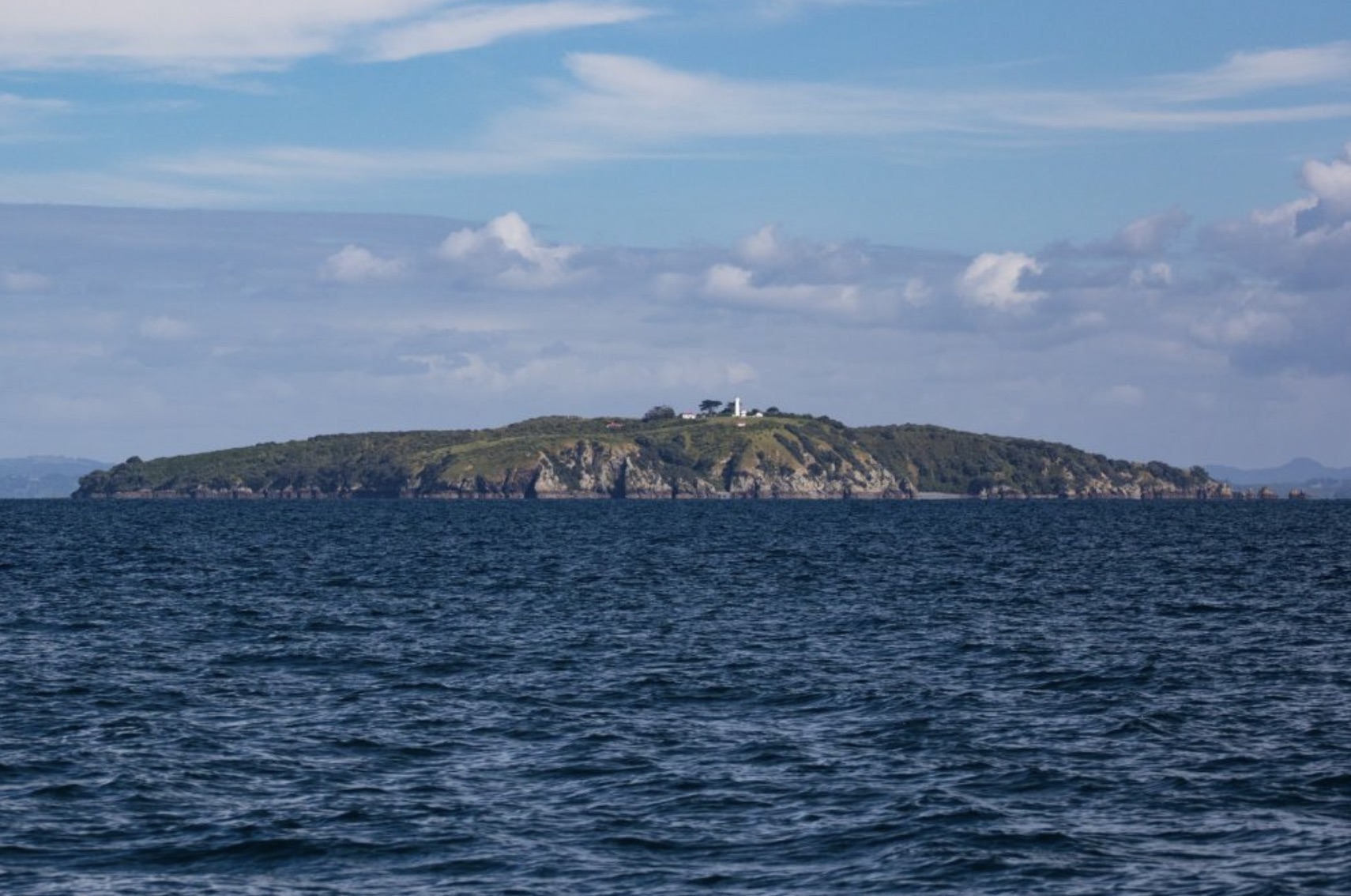Copper Rod
Copper RodAuthor: Trevor ScottHeader Photo from the archives, pre 1971Date: March 2024Did you know that lighthouses are often struck by lightning? To prevent damage caused by these strikes, lighthouses are equipped with metal poles called lightning rods. These rods are attached to a thick copper wire that runs from the top of the lighthouse down to the ground. When lightning strikes the tower, it enters through the lightning rod and travels down the wire into the ground, minimizing potential damage.
Trevor Scott, who was the lighthouse keeper on Tiritiri Matangi from 1958-1960 and 1966-1969, shared that he remembers seeing the spare left over copper rods used to hang up curtains in the lighthouse keepers house.
Not your average Tuesday on Tiritiri Matangi – or maybe it is!
Not your average Tuesday on Tiritiri Matangi – or maybe it is!Author: Grant Birley. From his second visit to the Island and his first overnight stay.Photo credit: Grant BirleyDate: 20th March 2024My Tuesday morning on the island started like any other morning on Tiritiri Matangi. Up early to get out into the bush to enjoy the dawn’s chorus – it truly is a sound to behold! Then it was back to the bunkhouse for a quick breakfast and coffee, a little breakfast chat around the table and then off on what was going to be a very busy day! The forecast wasn’t great with predictions of rain coming through but that was not to deter my plans of walking around the entire Island! I started at the Bunkhouse and went up the East Coast Track all the way to the Papakura Pa and then back along the tracks that hugged the Western coastline. While it was a long day, it yielded some great sightings and a few special captures too. I absolutely loved the variation in flora and fauna at different stages along the island. My photography goals on the island were two fold. Firstly, in the day, to traverse as much of the island in search of the incredible bird and wildlife that call Tiritiri Matangi home and, secondly, to capture and experience the magic of the night that has become synonymous with this island, from the very elusive and incredibly special creatures who wander…
We chatter quietly away and then someone hears the first kōkako calls
We chatter quietly away and then someone hears the first kōkako calls Author and photo credit: Kathryn JonesDate: 10th February 2024It’s 4.30 am, pitch dark, on a morning in early December. I woke before my alarm went off. Time to start my day. Luckily I am a morning person. I get dressed in my work clothes quickly and quietly, trying to make as little noise as possible so others can continue to sleep. Outside I look up at the moon, the stars, and the lighthouse lights with awe. The team gathers in the bunkhouse kitchen and dining area for a bit of breakfast, and then we each go through our own routine to get ready to go out into the field. Boots, water bottle, binoculars, hand-held radio, pack with snacks and other miscellaneous gear, head torch with red light on. We walk across the grass to the implement shed to sign out and have a safety briefing. It is still dark. We head out to where we are going to look for our first pair of kōkako for the day. Often we head up Coronary Hill and admire the early dawn colours, and then head quickly away. Sometimes, walking along Ridge Rd, ruru fly past you and brush ever so slightly against your arm. We chatter quietly away and then someone hears the-first kōkako calls and we then all listen intently. We reach the area we are going to be working in, and the team leader organises us into starting positions around…
Spade brigade
Spade brigadePhoto credits: Neil DaviesIt’s inspiring to think about the planting programme that started in 1984 on the island to help restore the native birdlife habitat. It’s impressive that over 10 years 280,000 trees were planted by volunteers, which included thirty different species of trees and shrubs. These volunteers formed the “spade brigade” and used pointed spades to plant seedlings that had germinated in the island’s nursery. It’s great to see people coming together to preserve the natural environment. Thanks to the vision of the Neil Mitchell and John Craig who thought of the idea and to the efforts of the volunteers.
The Tiritiri Matangi project changed the way conservation was done in New Zealand. Previously, only a select group of privileged scientists were involved in conservation efforts, which mostly took place in remote areas. However, this project paved the way for community-led-conservation, making it possible for everyone to be involved in conservation.
Below are the before and after photos showing the forest growth.
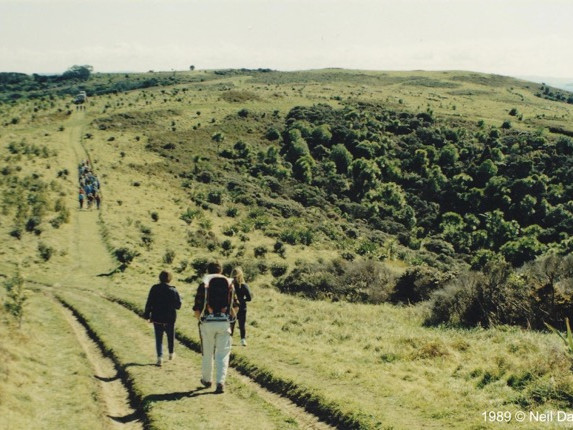
Tiritiri Matangi: a perfect fit for United Nations environment programme
Tiritiri Matangi: a perfect fit for United Nations environment programmeAuthor: Mel Galbraith (From the Dawn Chorus Archives, 130 August 2022)Date: August 2022Ecological restoration on Tiritiri was well ahead of its time. It has taken initiatives such as the sanctuary to encourage a global declaration that is now being internationally recognised, explains Mel Galbraith. Twelve hours after we collectively chorused Auld Lang Syne to welcome in the 1st January 2021, the United Nations launched a “Decade on Ecosystem Restoration” 2021-2030. Not that you would have noticed; there were no fanfares and I doubt if any of the local firework displays were in recognition of this cause. No doubt the global pandemic was occupying the headlines at the time. And, even as we edge back towards a new more stable “norm”, it is still unlikely that the UN initiative will demand much media recognition. Such is the nature of (positive) environmental news. The UN Decade on Ecosystem Restoration 2021-2030 explicitly calls for … Preventing, halting and reversing the degradation of ecosystems worldwide: “The over-arching vision for the UN Decade is a world where – for the health and wellbeing of all life on Earth and that of future generations – the relationship between humans and nature has been restored, where the area of healthy ecosystems is increasing, and where…
My first working weekend
My first working weekendAuthor: Meredith BloggDate: 13 November 2023 Tiritiri Matangi sure lives up to its English translation…by blowing me away every time! This weekend I had the privilege of participating in my first Working Weekend. Surrounded by long-time, seasoned volunteers and an absolute abundance of wildlife I learned so much (and gasped in wonder a fair few times!) We got to work Saturday afternoon, divvying up projects and making plans for our dream teams. As the newest volunteer I wasn’t sure what to expect but I was welcomed into the crew and felt right at home with Peter’s ‘Dad Jokes’. The Tiritiri Volunteers take balance very seriously so I had plenty of time to swim, nerd out on birds, walk in wonder and enjoy the extraordinary beauty and bounty of the island. The before and after photos above show how much work we got done, and we sure had a great time doing it! Thank you to all the volunteers who have put in years of hard work to make this island what it is: a safe haven and a magical place for all the species who live, work, volunteer and visit! Your wealth of knowledge, commitment and care are so deeply appreciated. https://www.tiritirimatangi.org.nz/wp-content/uploads/2023/11/Labour-Working-Weekend-2023.mp4
The brightest in the land
The brightest in the landAuthor: Alasdair BaxterDate: 30th October 2023The video was recorded on my phone on a trip to Tiritiri Matangi over Christmas – I stayed the night and guided both days. I tried to get snippets of film so that it looked like I was walking along to Hobbs Beach and then up the Wattle Track to the lighthouse (which you will see flashing at night). Then I filmed a walk back to the wharf the next day and, of course, the ferry leaving the wharf. I was lucky to see kōkako up close on the first day. I deliberately avoided shots of people in the film (although you might be able to spot one or two if you look very carefully). I wrote the song’s chords and melody first and then decided the story of the lighthouse would be a good subject for the song. Anne Rimmer’s Tiritiri Matangi book helped me with a few of the lyrics. I came up with a rough arrangement and then we all added our many instruments to the recording. Emily Allen did a great job arranging her string parts and playing and adapting the traditional Irish reel which is featured in the song. Our band hoop plays regularly in Auckland and runs the Ministry of Folk in Mt Eden (look us up on Facebook :-)) “The Brightest in the Land” is a song by the Auckland band “hoop” about the lighthouse on Tiritiri Matangi island. Hoop run The…
Passing of Ray Walter
Passing of Ray WalterAuthor: Ian AlexanderDate: 23rd October 2023Header Image Credit: Jonathan MowerFeatured Image Credit: Martin SandersIt is with sadness we are informing you of the passing of Ray Walter. He served as lighthouse keeper, ranger, supervisor of the Island Conservation Project, committee member of SoTM, and a leader of many of the infrastructure projects including, most recently, the lighthouse museum. Ray arrived as lighthouse keeper in 1980 at a time when the automation of lighthouses in NZ was already in progress, and by 1984 he was out of a job. However the commencement of the Island Conservation Project provided an opportunity to work as a supervisor for Lands and Survey, (later Department of Conservation) as a Ranger and he took over management of the Project in 1985. His legacy can be seen in the 283,000 trees planted on the island, resulting in the rich diversity of forest which now covers much of Tiritiri Matangi, and wildlife introduced including many endangered bird species whose unique calls today resound across the island, especially at dawn. Ray, together with his wife, Barbara, were DOC rangers for 26 years, until they both retired from the day to day operation of the island in 2006. During this time boardwalks were built, tracks constructed across the island, as well as other important infrastructure. Another…
Being a guide on Tiritiri Matangi Island
Being a guide on Tiritiri Matangi IslandAuthor: Bob BickerDate: 17th October 2023School in Southampton included sport. I would be told tomorrow we’re going to The Common, a large, forested area with sports fields, reason? to play cricket, the very word made me yawn. They’d put me in a fielding position, the ball would whistle by, I was oblivious to it as I’d be looking the other way, watching squirrels, birds and occasionally a fox. How nature worked fascinated me then, nothing’s changed. A few years later I found myself in Alderney for ten years, the northern most of the Channel Islands. One job I had there was crew on a lobster boat pulling the pots. Just north of the island was a small islet, Burhou which in the season had Puffins. I’d say to the skipper ‘ can we land there ’, seeing these fed my passion. By default, I became the person who you took injured birds to. Locals would knock on the door to hand me a wounded Cormorant, Razorbill or Guillemot. I had scant knowledge of how to help these creatures but did have a reasonable degree of success, one I’m still proud of. Go forward a few years and I’m on a ferry approaching Tiritiri Matangi to learn how to guide and then hopefully impart knowledge to our visitors of our flora and fauna and how it works and importantly how we need it. I had scant idea of the steep learning curve I was…
People power
People powerAuthor: Stacey Balich(Information sourced from 'Long term value of engaged, skilled, citizen scientists' Mel Galbraith and Hester Cooper)Date: October 2023When I first visited Tiritiri Matangi Island, I was amazed by the place. As soon as I stepped off the boat onto the wharf, the sound of bird song was amazing and I knew I was in for a great day. My family and I spent a wonderful day exploring most of the Island, taking in all the beautiful sights and sounds of nature. I fell in love with the Island and knew that I wanted to come back again and again. After visiting a few times, I decided to become a volunteer guide and that’s when I was truly inspired because of the people I was about to meet and get to know. It’s amazing how much you can learn and appreciate when you become a part of something like this. The Tiritiri Matangi Island project has been around for decades, and it stands out from other conservation initiatives because it involves a volunteer workforce. Unlike other restoration projects where academics and government scientists hold all the power, the volunteers are given the responsibility to lead projects and are treated as true partners. Mel Galbraith and Hester Cooper discuss this approach in their article, ‘Long term value of engaged, skilled, citizen scientists’. The planting program began in 1984,…
